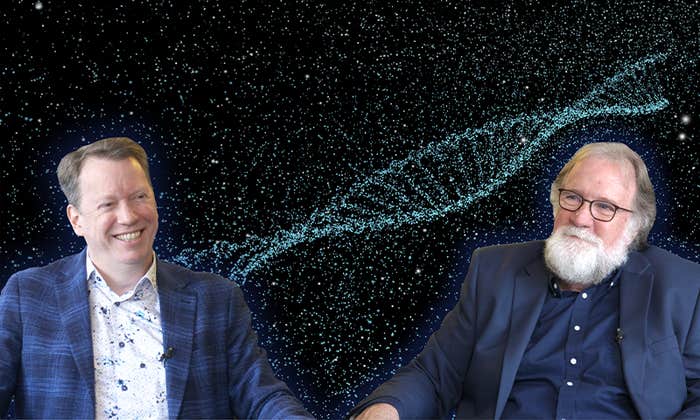Getting “lectured” is rarely, if ever, a pleasant experience. You’re being told what to do and think, or even chastised. Don’t lecture me, we like to say. Having to “attend” a lecture, though—that’s not so bad, depending on the speaker. Hell, on the go, I listen to lectures willingly. Check out “A Master List of 1,300 Free Courses From Top Universities: 45,000 Hours of Audio/Video Lectures,” from Open Culture. It’s a treasure trove.
Yet the efficacy of the lecture, as a teaching method, is in doubt. The latest salvo comes from a study published in Science last month, authored by just under 30 researchers who, a decade ago, began monitoring almost 550 lecturers as they taught over 700 courses at 25 universities in Canada and the United States. The task of gathering and analyzing all the study’s data is unenviable, involving sitting in on classes and then rewatching them on tape.
The main conclusions: First, “Didactic practices”—various forms of lecture, using slides and so forth—“are prevalent throughout the undergraduate STEM curriculum,” the researchers write. Over half of the classes didn’t involve students except in the form of “sporadic questions” from and to them despite “ample evidence,” they go on, “for the limited impact of these practices and substantial interest on the part of institutions and national organizations in education reform.” Second, survey-based studies on faculty members has suggested that classroom layouts, like big amphitheaters with huge numbers of students, can be barriers to “instructional innovation”—the unalterable structure of the room caters to the status quo. But, the study found, when teachers have flexible layouts and fewer students they tend to fall back to lecturing. Third, you’ve got to sit in on a teacher at least four times to accurately assess their teaching method—how frequently they lecture versus have students, for example, answer quiz questions using wireless clickers or work together on a group project. Group work, an instance of “active” or “student-centered” learning, helps a lot, according to a 2014 meta-analysis of 225 studies. “These results indicate that average examination scores improved by about 6% in active learning sections,” the researchers found, “and that students in classes with traditional lecturing were 1.5 times more likely to fail than were students in classes with active learning.”
Some fields are less lecture-heavy than others.
The researchers of the Science study close by saying that, in effect, it shouldn’t be too much to expect fields that prize empirical evidence to go where the evidence points. “These findings challenge institutions and STEM disciplines to reflect on practices and policies that sustain the status quo,” they write. “Specifically, institutions should revise their tenure, promotion, and merit-recognition policies to incentivize and reward” faculty, of “all academic ranks,” to implement ways of instructing students that have been shown to work. Some fields are less lecture-heavy than others. “Relative to chance,” they found, “mathematics and geology have more student-centered styles than expected, biology has more interactive”—clicker-grounded—“styles than expected, and chemistry has more didactic styles than expected.”
Olin College, considered one of today’s most innovative science and technology campuses, is one school that’s reducing the importance of lectures—and has done away with tenure altogether.* The tenure system disadvantages women, Richard K. Miller, Olin College’s president and first employee (he designed the school from scratch), told Nautilus. “There is a series of other issues [with tenure] as well. One of them is that tenure is a lifetime commitment to an individual rather than to what they are doing. You discover that as people mature in their career…there are certain sort of seasons in their life where they are really good at research; other parts of their life, they really care about young people and about mentoring and about teaching; and some parts of their career where they care about building new programs; and the tenure system doesn’t recognize that.”
Olin also avoids lecturing its students, engaging them in project-based learning instead. A criticism sometimes levied at Miller is that this only suits the brightest students. “That’s a worry we take very seriously,” he said. “We’ve been working specifically with other universities that don’t have especially precocious students or very demanding entrance requirements to see if the principles that we’re using will still work.”
For example, Olin has partnered with the University of Texas, El Paso, an open-enrollment institution, “which in a sense means that the only two entrance requirements are a pulse rate and a high school diploma,” Miller said. “This is not what you would call a school that’s restricted for highly precocious students.” Nevertheless, it’s one of the highest-producers of Hispanic-background engineers in the U.S, and “a good fraction of those students drive over the river from Mexico every day to take classes,” Miller said. “We’ve been doing this for two or three years with them and the results, so far, are remarkable. It turns out that this business of finding out what students are passionate about and empowering them with what we call designed thinking—the ability to frame the right questions for the right problem to solve, and show them how to develop the materials at their own—works at every level of the educational spectrum.”
Project-based learning, or designed thinking, doesn’t just help students “get” the material in time for a good grade on the test; it also helps deepen their appreciation for what they learn. “There is an enormous amount of work that has demonstrated that these (student-centered) strategies improve students’ learning and attitudes toward science,” said Marilyne Stains, the lead author of the Science study and an associate professor in the Department of Chemistry at the University of Nebraska. “It’s not just that they understand it better, but they also appreciate science more. They’re not as scared of it, and they engage more easily with it. When you see that kind of effect, it makes you say, ‘Why are we still doing it the other way?’”
Watch our whole conversation with Miller here, in which he discusses, among other things, what’s wrong with the way we teach engineering today, and why engineering majors are getting the most well rounded, liberal arts education.
Brian Gallagher is the editor of Facts So Romantic, the Nautilus blog. Follow him on Twitter @bsgallagher.
Lead image: ESB Professional / Shutterstock
* Olin College has been a financial supporter of Nautilus.


























